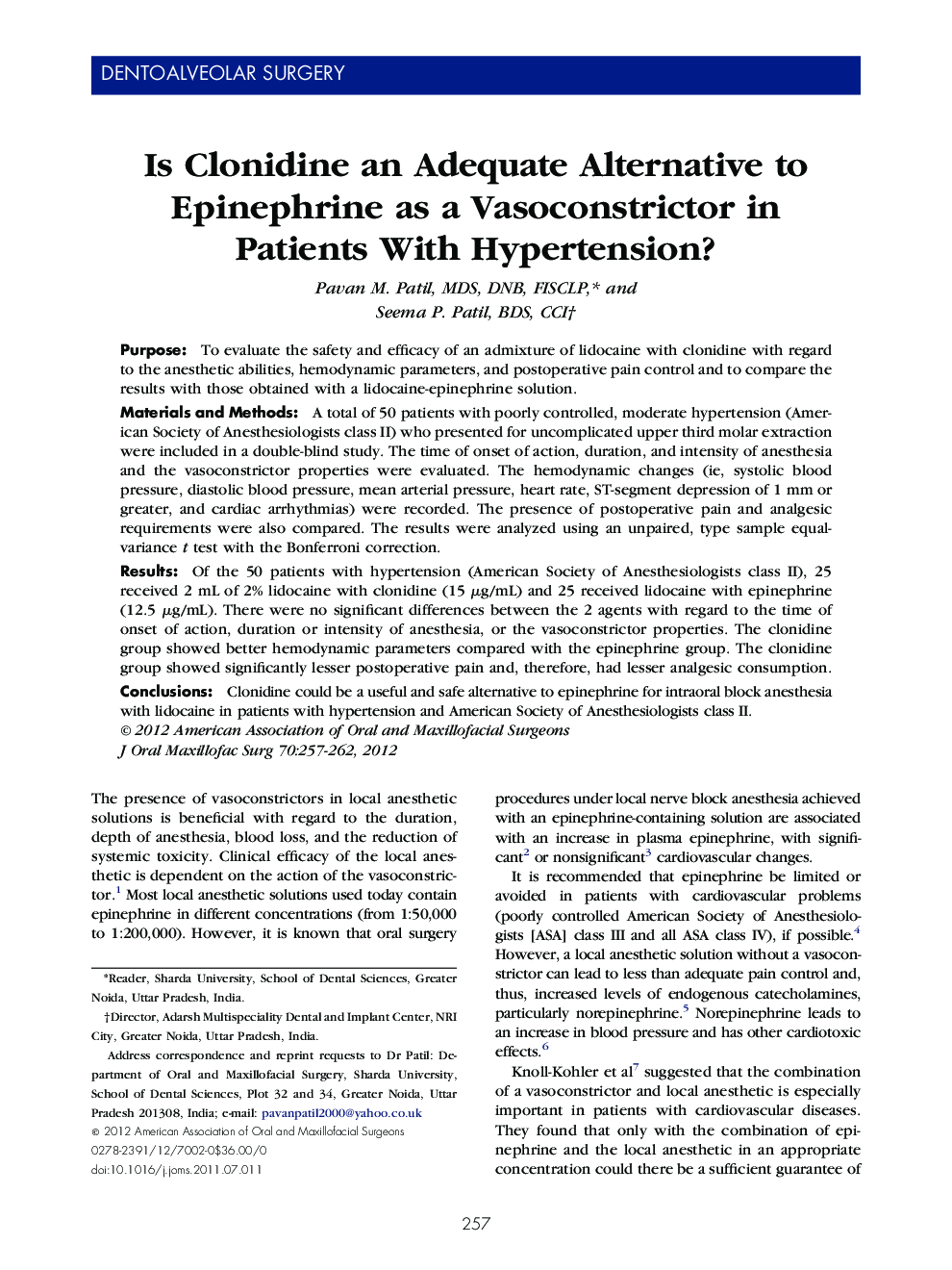| Article ID | Journal | Published Year | Pages | File Type |
|---|---|---|---|---|
| 3153798 | Journal of Oral and Maxillofacial Surgery | 2012 | 6 Pages |
PurposeTo evaluate the safety and efficacy of an admixture of lidocaine with clonidine with regard to the anesthetic abilities, hemodynamic parameters, and postoperative pain control and to compare the results with those obtained with a lidocaine-epinephrine solution.Materials and MethodsA total of 50 patients with poorly controlled, moderate hypertension (American Society of Anesthesiologists class II) who presented for uncomplicated upper third molar extraction were included in a double-blind study. The time of onset of action, duration, and intensity of anesthesia and the vasoconstrictor properties were evaluated. The hemodynamic changes (ie, systolic blood pressure, diastolic blood pressure, mean arterial pressure, heart rate, ST-segment depression of 1 mm or greater, and cardiac arrhythmias) were recorded. The presence of postoperative pain and analgesic requirements were also compared. The results were analyzed using an unpaired, type sample equal-variance t test with the Bonferroni correction.ResultsOf the 50 patients with hypertension (American Society of Anesthesiologists class II), 25 received 2 mL of 2% lidocaine with clonidine (15 μg/mL) and 25 received lidocaine with epinephrine (12.5 μg/mL). There were no significant differences between the 2 agents with regard to the time of onset of action, duration or intensity of anesthesia, or the vasoconstrictor properties. The clonidine group showed better hemodynamic parameters compared with the epinephrine group. The clonidine group showed significantly lesser postoperative pain and, therefore, had lesser analgesic consumption.ConclusionsClonidine could be a useful and safe alternative to epinephrine for intraoral block anesthesia with lidocaine in patients with hypertension and American Society of Anesthesiologists class II.
